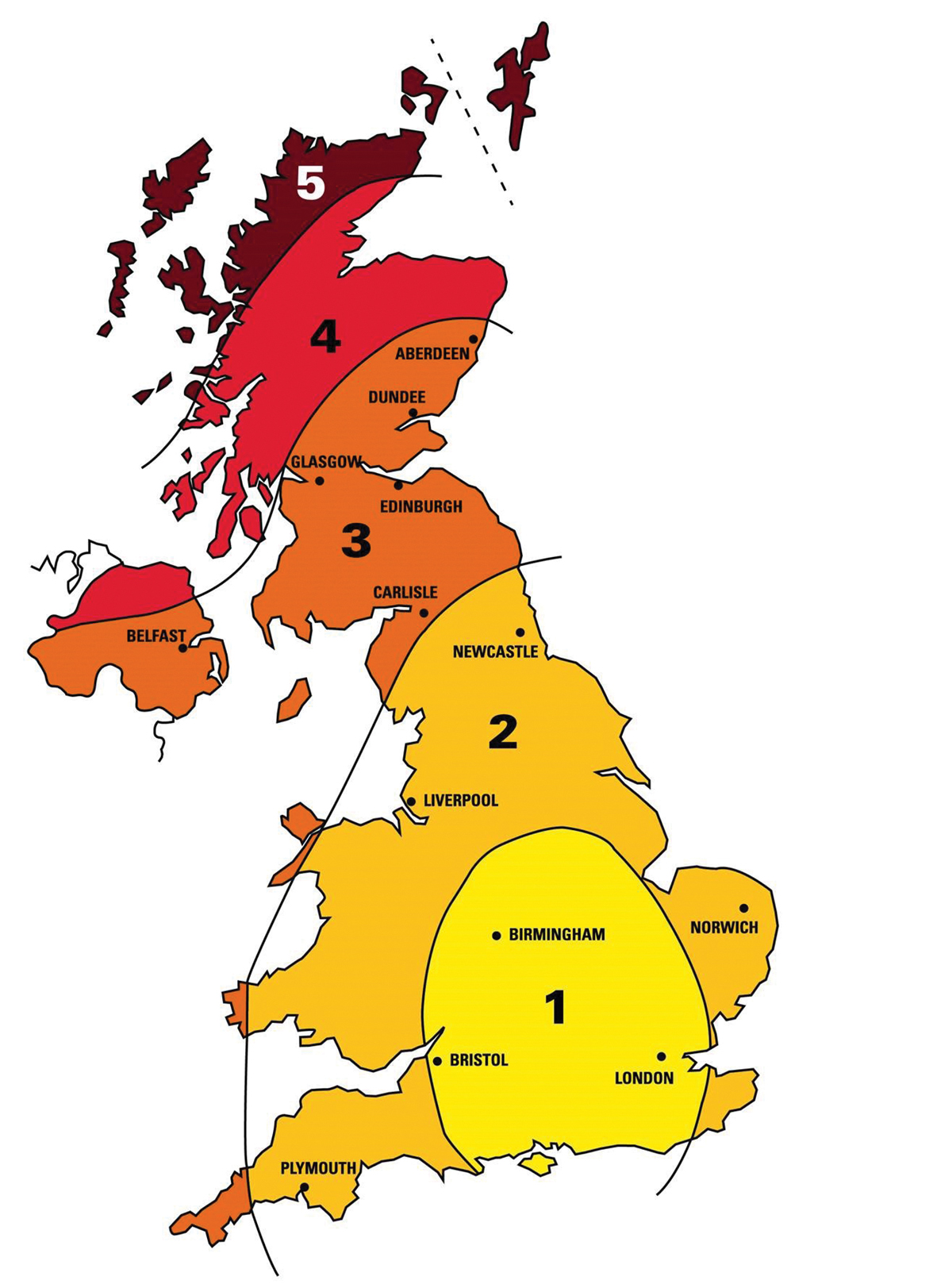Independent research reveals that not all underlays are created equal. So, if you think the materials you’re using are OK in the zone…it could be time to think again.
All roofing membranes on the market today claim to be compliant with the Wind Uplift requirements in BS 5534:2014 for one or more of the five UK Wind and Pressure Zones. While these zones are helpful as a general guide, and identifying your zone is a good place to start – the impact of wind on roofs is more complex than lines on a map; you have to consider the building’s location within the zone for a true indication of what’s needed to protect against wind damage.
Take Zone 2 for instance, which covers an area from Wales through parts of the Midlands to the North Sea. Does a roof on the side of Mount Snowdon experience the same wind and driving rain conditions as a roof in the Lincoln flatlands? It’s unlikely, yet both are located in the same zone. This example highlights perfectly the other factors that need considering, such as:
- The height of a building can create pressure on the roof.
- The condition and design of the building can be significant. A garage roof, or a building with a poor ceiling underneath, can be more vulnerable to wind pressure.
- Proximity to water – the sea, reservoirs, large rivers or lakes can also have an impact on any roof’s long term performance.
And there are other factors to consider when making your selection. The length of time the membrane is left uncovered before the covering is put on – can the product you choose withstand this exposure? How durable will your membrane be over time? Will it last 20 years or more, or could its water hold out fail relatively quickly?

INDEPENDENT RESEARCH
With so many factors affecting performance it’s essential roofing membranes are durable. One company that has been looking at this is DuPont™, makers of Tyvek® roofing membranes. They asked the Independent SP Technical Research Institute of Sweden to perform a series of comprehensive ageing tests on a range of multi-layer breathable underlays to see how they performed. Particular attention was paid to water tightness, with a variety of membranes tested to see how they fared for longevity and the associated risk for property, energy consumption, insurance – and, of course, reputations.
The tests were carried out as follows:
- Independent experts opened up 30 roofs to undertake rigorous water tightness tests on ‘real world’ aged roofing underlays.
- 17 roofs installed with Tyvek® over 20 years ago and 13 roofs with multi-layer or coated roofing underlays installed between 5 and 10 years ago were investigated.
- The independent test reporting went beyond the limitations of current standards to check the reality and precise scale of performance.
- Results showed Tyvek® kept its water tightness for much longer that other membranes after UV and heating tests.
The results were conclusive – Tyvek® breathable membranes outperformed all the other products tested. The programme concluded that even after exposure to direct UV and sustained high temperatures, Tyvek® membranes can still provide years of effective watertight protection.
During the tests, which were performed according to EN 13859 regulations, all the breathable underlays were subjected to direct UV, and their continued water resistance was then tested to class W1. Tyvek® demonstrated higher durability and significantly superior resistance to UV exposure.
Next, all the breathable underlays were exposed to temperatures of 90°C (above the CE requirement of 70°C), and their continued water resistance was tested to class W1. Again, Tyvek® demonstrated high durability and superior resistance.
The benefits of this knowledge to contractors can’t be overstated. Thanks to their highly durable functional layer, Tyvek® underlays safeguard watertightness over the long term. And, by ensuring durable windproofing and vapour breathability, they also protect surfaces and structures better against condensation. Regardless of the wind zone, or more specifically where in that zone you’re working, with Tyvek® you know you’ve got a product that’s up to the job. That means you’ll get less call backs and more peace of mind. Now, that’s definitely in the zone.
KEY CHARACTERISTICS OF TYVEK MEMBRANES
Unique functional layer
- Water vapour passes though the single layers natural pores – so a roof can ‘breathe’ - yet keeps water out.
- 6-8 times thicker than other membranes, which makes it more durable and resistant over time.
Watertightness
- In tests, Tyvek® membranes outperform alternative membranes in terms of watertightness, which offers lifelong protection.
UV and heat resistance
- Tyvek® is made of 100% UV and heat-stabilised poluethylene, which results in superior resistance and durability.



